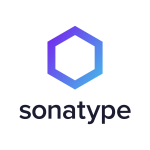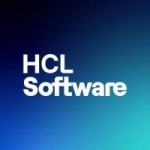What is our primary use case?
Security scanning of the applications, of software that my company built.
How has it helped my organization?
We have a large developer base at our company ranging in a variety of skills sets. Some are very security aware, others really don't have the knowledge. What Veracode provides is really good feedback on what vulnerabilities were found in their code: examples, definitions, ways to mitigate. One of the huge benefits we've seen is just a bigger security awareness within our development staff.
Further, with the tools that Veracode provides, they're actually able to comprehend what the vulnerability was and then resolve it. So a lot of knowledge has been grown as a result, around security, with our developers.
Veracode provides application security best practices and guides our security and development teams because most of the time, in the issues that it opens, it has lots of links and details in there. There are also regular emails and newsletters and they send out about trends. So, there's a fair amount of communication and there are also a lot of details within the issues that they find. There's always plenty of material that they link to in issues. They do a really good job of providing a lot of communication and detailed documentation around our application security tools.
Our customers have benefited in the fact that know that we put security right in front, as a priority. It's not an afterthought. They're a lot more aware that we're security conscientious, instead of just, "The software works, here you go."
We also have reports. Some of our customers have asked for various types of reporting and security related stuff. Now, we're also able to give them these reports, essentially from Veracode's scans of our software. So, we have a lot more documentation about it. Instead of answering one-off questionnaires from our clients, we actually have a canned report we can provide. Again, all this material, we didn't have a year ago. We were just ad hoc answering things and hoping that they didn't question it anymore, and we really didn't have any good evidence. They were just taking us at our word.
What is most valuable?
The most important one is the static scanning analysis, and the reason is that it can tell us vulnerability in that code, right before we go ahead and push something to production or provide something to a client.
We pair that with dynamic scanning, which actually hits our Web applications, to try to detect any well-known Web application vulnerabilities as well. It's really just a way for us to stay ahead of it and provide some assurances and security with the software that we deliver.
Also, Veracode has a nice API that they provide to allow for custom things to be built, or automation. We actually have integrated Veracode into our software development cycle using their API. We actually are able to automatically, every time a new build of a software is completed, submit that application, kick off a scan, and we get results in a much more automated fashion. So the API is a huge thing that we use from Veracode, in addition to those two types of scans.
In terms of integrating Veracode into our existing software development life cycle, we heavily use JIRA today for bug tracking issues, time management, and the like, for our development team. When those scans kick, Veracode integrates back into our JIRA and actually open tickets with the appropriate development teams. We can use that as a measurement of vulnerabilities opened, closed; we can tie them to releases. So, we get a whole lot more statistical information about security in our software products. That's really what we use in measuring there, the integration back to JIRA in issues found.
What needs improvement?
From a technical standpoint, I'm pretty happy with everything. The one thing I'd like to be able to do is schedule dynamic scans. Today we're kicking those off manually, but I believe that it's something have on their roadmap.
Other than that, I don't really get too involved in the cost sides of things that's in my job, I'm more of a technical focus, but I have heard from my manager and a couple other people that the solution is quite expensive. So that is possibly one factor that could turn somebody away from Veracode. But, like I said, I really don't know much more about that. Technically, I'm very impressed and happy with what they've had to offer.
For how long have I used the solution?
One to three years.
What do I think about the stability of the solution?
I have not run into one issue with stability with it. I'm throwing stuff at it all day and I can't think of one time where I've had an issue with submitting a scan or getting a scan to complete. It's been pretty flawless.
What do I think about the scalability of the solution?
The one thing we hit was some licensing limitation. Again, it went back to cost, I believe. We had to go back and change our licensing model with Veracode to be able to scan all the things that we wanted to. I think there was some confusion up front with their licensing or cost.
Like I said, that's really the only area that I've heard some gripes about, but I'm far removed. I'm not sure if it was scalability or a licensing mishap, but we did have some issues early on, with the amount of things that we wanted to scan and what their limits were for us. But ever since whatever was straightened out there, I have not had an issue of scalability.
How are customer service and technical support?
Initially, I had some questions back and forth and I was able to get everything resolved, mostly via email. Overall, I thought the response time was good, the answers were concise and accurate. Within 24 hours I was getting a response via email from their support. For what I needed to set up, I really thought their support was great and really sharp.
I don't work with the support that often, now that things are established. But to get off the ground running, they were extremely helpful.
Which solution did I use previously and why did I switch?
We had never done anything like this in the past. This was the solution that we chose. We didn't really evaluate anything else. I know that my boss has been a fan of some CA products in the past and really recommended this one. I did some digging on it, from a technical standpoint, and I said I believed it would be able to scan all our stuff, support our platforms, the languages that we write our applications in, so that's how we landed on Veracode.
How was the initial setup?
Without the API, it would have been extremely complex. It would have been very painful because it would have been a very manual process of submitting applications.
I am fortunate enough that I have a pretty strong development background, so I do a lot of coding myself. For the person without development experience, using the API would have been very difficult. Where I work, we're a little unique in that sense.
But the rest of it, it's a cloud-based solution. I'm kicking off all my stuff over to Veracode and it's running in their environments and producing results. There's not a whole lot of setup besides that. It's not a big cost on an any infrastructure that we have to run or support. So, pretty painless really.
What was our ROI?
I wish I had some numbers - this is really not my area. I would assume that it's got to be a fair amount of cost savings, only because we're touching things earlier. We didn't have anything before. I don't have good stats to provide except for the fact that now we have something in our process, where before we didn't. Before, security things were only being addressed if somebody actually found something or, even worse, if a customer found something. We don't have a lot of historical data but it's got to be substantial.
I believe, from a technical standpoint, it's paying off for the rest of the organization. I think ethically it's the right thing to do. Educating our staff - I don't really know how you measure that in a dollar amount - but our developers are getting education and are becoming more aware of security in their software. Me being a technical guy, those two things are huge, and the dollars don't add up enough. I'm not sure how you would measure it.
It probably pays off more over time as well. We're still only a year into it. So we're still learning a lot ourselves.
What's my experience with pricing, setup cost, and licensing?
If you're licensing, and you're looking at licensing models, you might want to ask Veracode about their microservice, depending on the company. If you are a microservice architecture, I would suggest asking them about their microservice pricing. I would suggest that you evaluate that with your code and their other licensing model, which is like a lump sum in size of artifacts, and just make sure that you price that out with them, because there might be some tradeoffs that can be made in price.
Which other solutions did I evaluate?
There were some, but we didn't get serious about them because they didn't have everything that we wanted.
What other advice do I have?
I would advise that you figure out a way to integrate it into your software development lifecycle in a way that it's not intrusive to your developers. That was really something that I set out to do. I didn't want my developers to have to go into their code, and kick off scans, and upload their code. So, I would really suggest looking at your integrations, your JIRA, your Jenkins, all of your add-ons, and hopefully that fits into the SDLC process, and then automating via their API.
Essentially, what we were able to achieve is, my developers still live within JIRA and the issues get opened from Veracode into JIRA and they work on things that way. They can remediate it, kick it that way, and if they need to they can log into Veracode. But I'd suggest making the SDLC process integrated as much as you can to make it something that developers aren't having to spend a lot of time doing every day.
Overall, I would give Veracode a nine out of 10, just because nothing is perfect. But it does everything for us and it was so painless. I speak very highly of it for those reasons.
I would highly recommend CA Veracode. Every engineer that I've dealt with has been really sharp. The review process they have is really good and the knowledge they have has been tremendous. I really recommend working with them.
Disclosure: PeerSpot contacted the reviewer to collect the review and to validate authenticity. The reviewer was referred by the vendor, but the review is not subject to editing or approval by the vendor.

















